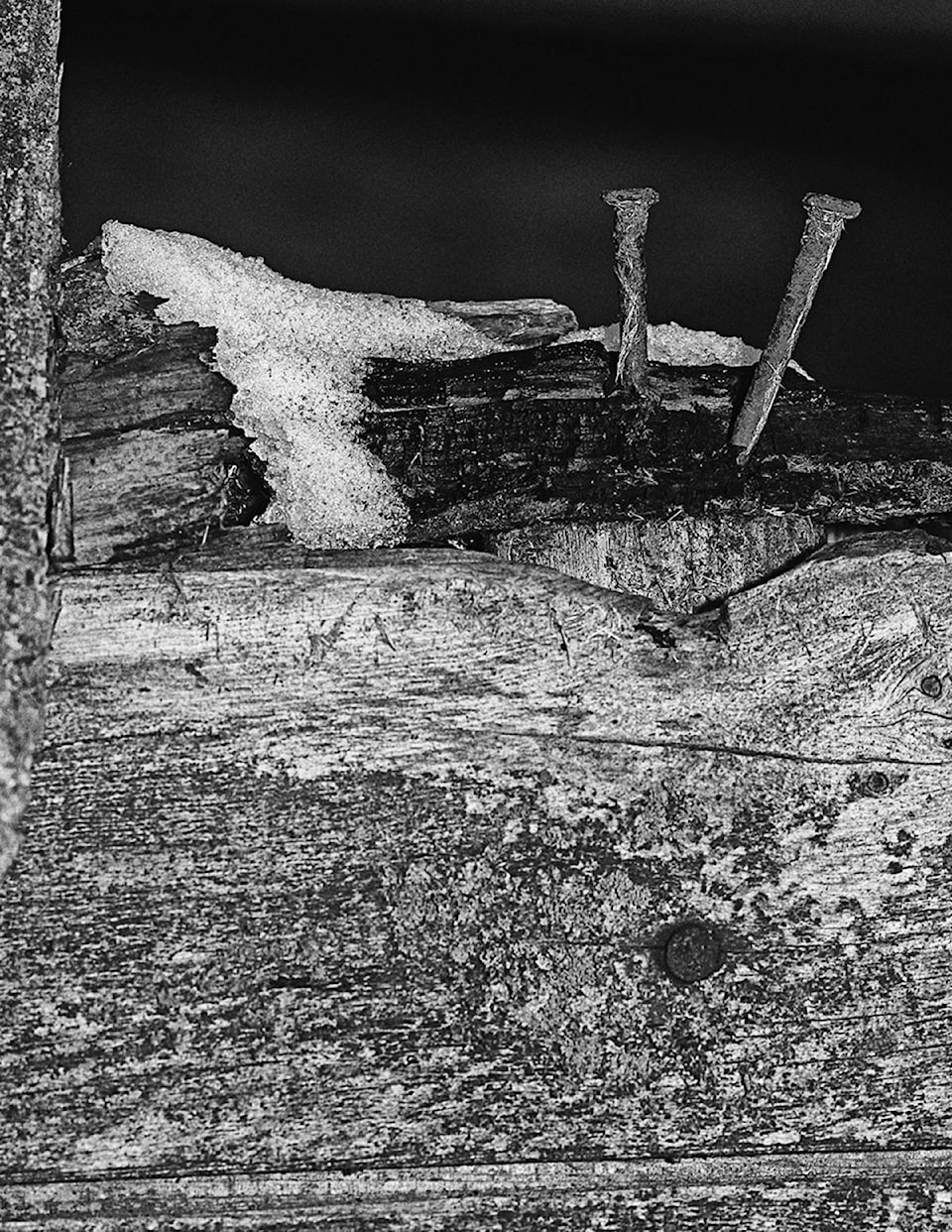I was darned happy when I got up and looked outside on the last morning in February.
There was two inches of snow covering my yard and the temperature was just touching the freezing mark. Oh, and it was Sunday and I had nothing that I was supposed to do but enjoy Feb. 28.
The morning had a slight overcast and there was a faint breeze. I thought the breeze might be bothersome, but the overcast was the ideal condition for photographing my garden.
I mounted my large wireless flash on a sturdy light stand. That flash would give me control over the light and allow me to reduce background brightness. Additionally, the flash stopped the movement caused by that slight breeze.
I rarely walk out in my garden with a plan. I just wander and photograph whatever catches my attention and on this day the snow clinging to plants and rocks and other objects that reside in my garden were the perfect subjects.
I’ll mention that my sprawling garden isn’t just a place where plants grow. My garden is also a place that contains things I have found. Plants climb over old chairs, stepladders, wooden wheels, pieces of fence, old doors and windows, and many other discarded objects that I think might be fun to photograph along with the plants. And on this February morning the addition of the light covering of snow made for interesting compositions.
Regular readers know that I employ a flash whenever I can. Using a flash means I choose the direction of the light that touches my subject. And a flash allows me to determine the brightness of the subject and the environment it’s in.
Natural light is so restricting, and if I didn’t have a flash I wouldn’t have bothered trying to be creative on that breezy, flat, overcast morning. However, all I had to do was choose my subject, underexpose by two or more stops, position the flash so the direction of the light is where I want it, and push the shutter. (If my subject is too bright, or the direction of light isn’t good I move the flash and try it again.)
I usually try more than one aperture depending on the background and what depth of-field works best. Lenses that are designed for close-up photography usually produce a pleasing bokeh and don’t always need the widest aperture.
For those that don’t know what “bokeh” means, Wikipedia’s definition is. “Bokeh is the aesthetic quality of the blur produced in out-of-focus parts of an image
For me, there really aren’t any rules for close-up garden subjects other than keep the camera steady and the center of interest sharp. And regarding the photos we can find in a snowy end-of-February (or March) garden, I’ll finish this with a quote by the English novelist William Thackeray, “The two most engaging powers of a photograph are to make new things familiar and familiar things new.”
Stay safe and be creative. These are my thoughts for this week. Contact me at www.enmanscamera.com or emcam@telus.net.
